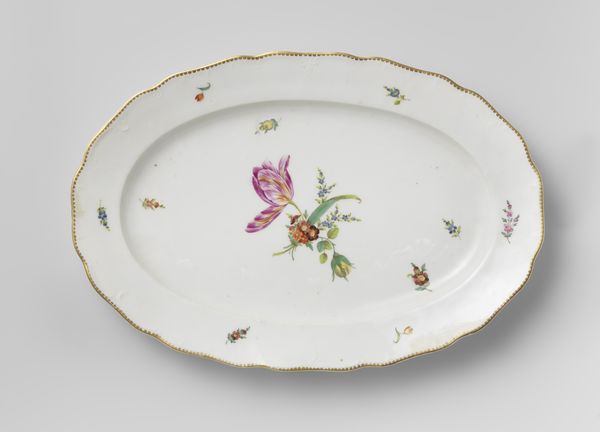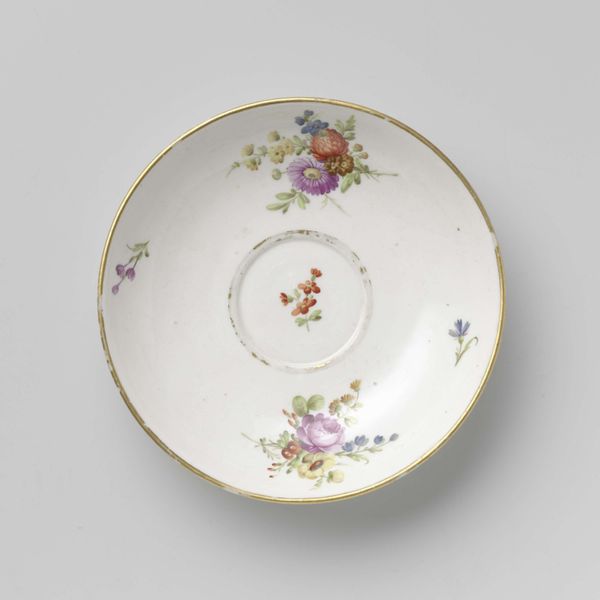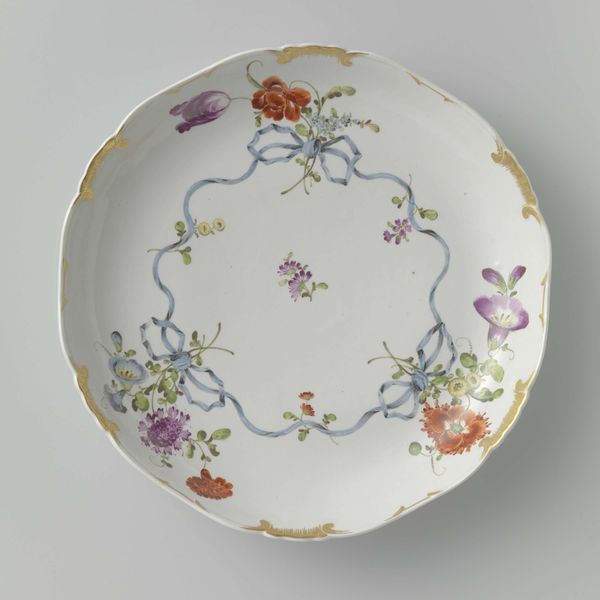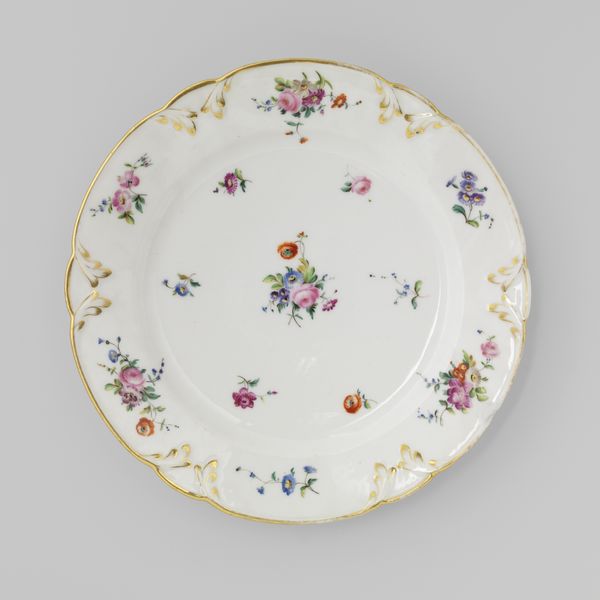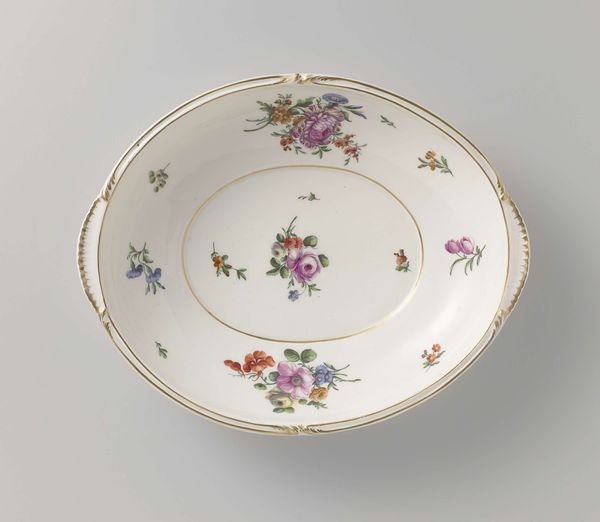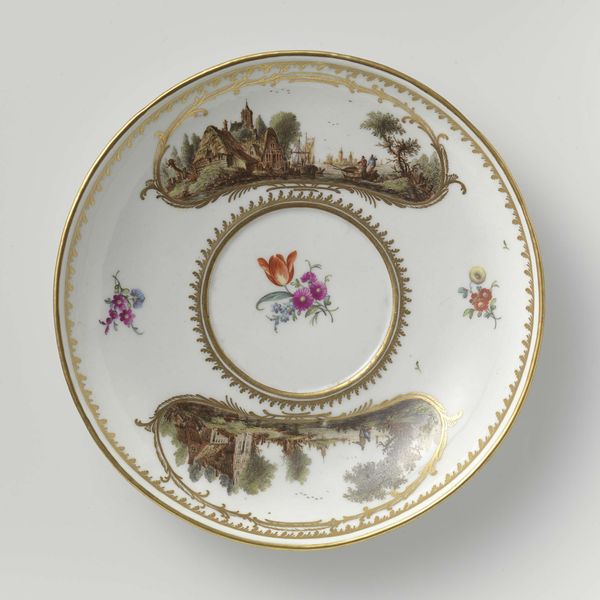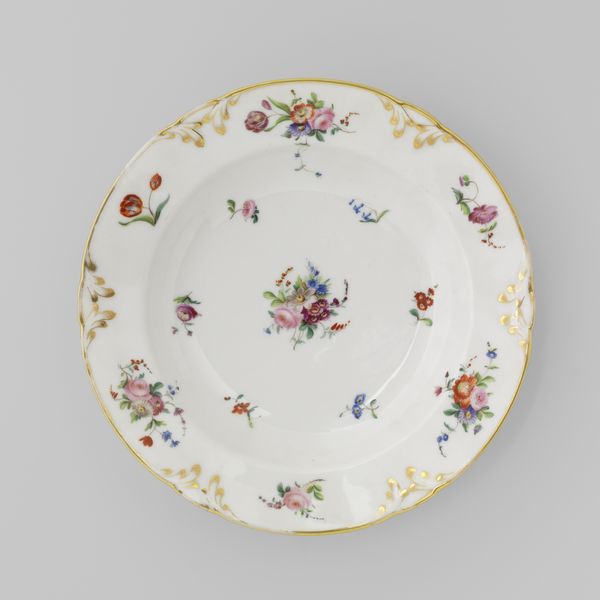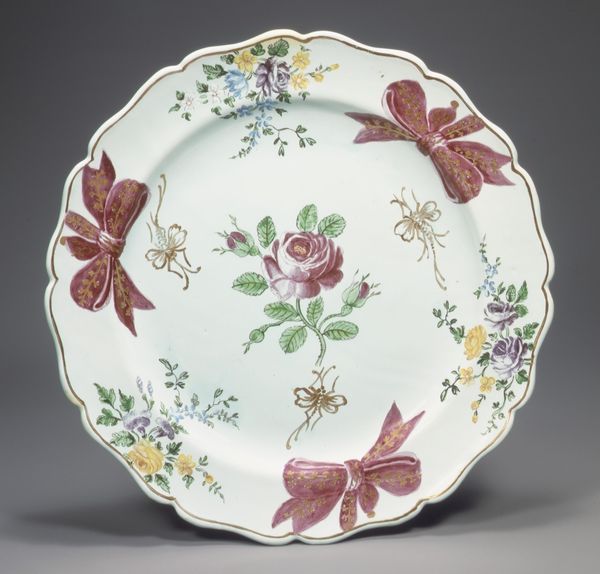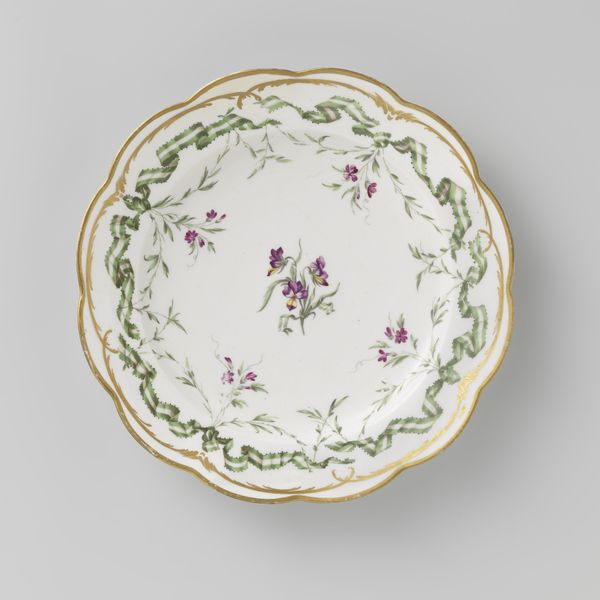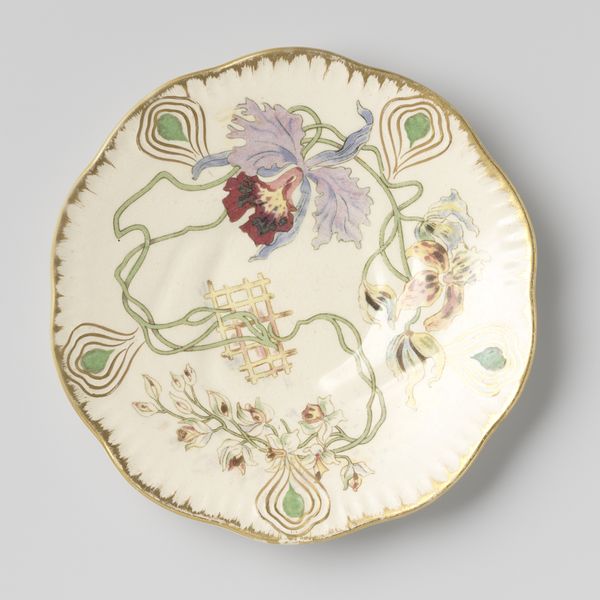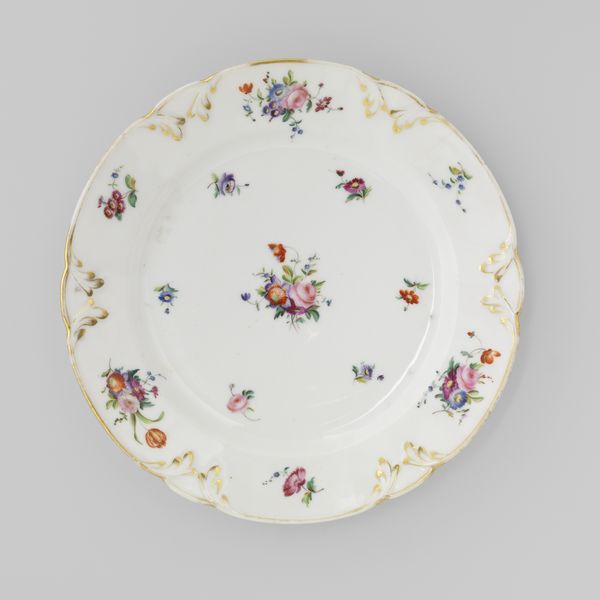
tempera, ceramic, porcelain
#
tempera
#
ceramic
#
porcelain
#
ceramic
#
decorative-art
#
rococo
Dimensions: height 3.8 cm, diameter 25 cm
Copyright: Rijks Museum: Open Domain
Curator: Here we have a plate from the Porzellanmanufaktur Nymphenburg, crafted around 1765. The materials are ceramic, specifically porcelain, decorated with tempera. The piece is firmly within the decorative art style of the Rococo. Editor: Oh, this feels like stepping into a secret garden. It’s delicate, ornate, and brimming with these meticulously rendered flowers. The colors are muted but lively. Curator: It's fascinating to consider the labour involved. Each floral motif, painstakingly applied to the porcelain surface, represents hours of skilled craftsmanship. The very production of Nymphenburg porcelain involved sourcing kaolin, the special clay and controlling kiln temperatures, complex tasks which affected its value. Editor: Absolutely. The floral arrangement itself is quite symbolic. Note how different flower types were consciously chosen and distributed across the piece; they speak to different feelings and thoughts—lilacs represent love and remembrance. That tulip probably indicates fame and a perfect lover, and the single butterfly is a reminder about mortality, of course, so someone made a powerful statement on such a plain object! Curator: The rococo style itself speaks to the aristocratic patronage and aspirations of the time, the decorative choices were a part of complex trade relations between europe and Asia from where the practice came in the first place. Consider the tension: delicate floral decoration versus the economic implications of its production, its availability and social standing that the artwork suggests! Editor: It really brings the cultural values into our vision, doesn’t it? Knowing about Rococo style, the materials and all those flowers and the single insect gives another weight to this delicate art object and our feelings as viewers, because such symbol are cultural elements and not neutral by any means. Curator: I completely agree. Understanding both the material production and the symbolic content elevates this plate from mere decoration to a document of history. Editor: And understanding it allows a more nuanced experience in front of the plate itself, an invitation to reflect on culture, luxury, life and inevitable change.
